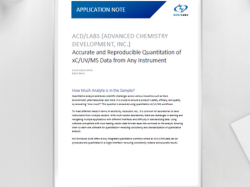NEJM publishes lecanemab Alzheimer’s study results
Posted: 30 November 2022 | Catherine Eckford (European Pharmaceutical Review) | No comments yet
Full study results of Eisai’s Phase III Alzheimer’s study suggest lecanemab could slow disease progression.


Full study results on Eisai’s pivotal Phase III Alzheimer’s (AD) trial for lecanemab, an anti-amyloid beta (Aβ) protofibril antibody, suggest that the drug could slow the rate of disease progression by 2.5-3.1 years and help people remain in the earlier stages of the disease for longer.
The data has been published in The New England Journal of Medicine (NEJM) and was presented at the 2022 Clinical Trials on Alzheimer’s Disease (CTAD) conference in the US.
Eisai’s key findings
- Results showed a 27 percent decrease in clinical decline in comparison to placebo at 18 months, -0.45 (95 percent Confidence Interval (CI): -0.67, -0.23; P=0.00005)
- Lecanemab offered 7.5 months slowing of progression. Tau PET analysis showing the drug slowed tau accumulation in the temporal lobe
- Lecanemab gave 31 percent lower risk of converting to next stage of disease via global Clinical Dementia Rating (CDR) assessment (Hazard Ratio: 0.69)
- Amyloid biomarkers showed early and sustained amyloid reversal effects in cerebrospinal fluid (CSF) and plasma Aβ 42/40 ratio in participants given lecanemab.
The placebo-controlled, double-blind, parallel-group, randomised Phase III study observed 1,795 people with early AD at 235 sites in North America, Europe, and Asia. Participants were randomised 1:1 to receive either placebo or lecanemab 10mg intravenously (IV) biweekly. There were 898 participants in the lecanemab group and 897 in the placebo group. The strategy for randomisation was done according to clinical subgroup, mild cognitive impairment (MCI) due to AD or mild AD (early AD), presence or absence of concomitant approved AD symptomatic medication at baseline (eg, acetylcholinesterase inhibitors, memantine, or both), apolipoprotein (ApoE4) status and geographical region.
Efficacy of lecanemab
The primary endpoint was change from baseline at 18 months in the CDR Sum of Boxes (CDR-SB), the global cognitive and functional scale. The mean change of CDR-SB using this endpoint was 1.21 and 1.66 for lecanemab (n=859) and placebo (n=875) groups, respectively.
As early as six months (difference: -0.17 [95 percent CI: -0.29, -0.05]; P<0.01), and increasing in absolute difference over time across all time points every three months, the treatment showed highly statistically significant changes in CDR-SB from baseline compared to placebo (all p-values are less than 0.01).
Secondary endpoints were the change from baseline at 18 months in amyloid PET using a centiloid scale. All key secondary endpoints demonstrated highly statistically significant results compared with placebo (P<0.001). In the amyloid PET sub-study, treatment with lecanemab showed statistically significant reduction in amyloid plaque burden at all timepoints starting at three months.
Tau biomarkers showed that removing amyloid improved CSF and plasma p-tau (p-tau181), downstream of amyloid in the AD pathology pathway. Tau PET analysis showed lecanemab improved total tau (t-tau) compared to the placebo.
Neurodegeneration biomarkers suggested lecanemab improved glial fibrillary acidic protein (GFAP) in plasma, a marker of astrocyte activation, and neurogranin in CSF, a marker of synaptic dysfunction, improved to normal levels by treatment. There was no significant difference in neurofilament light chains in CSF or plasma between lecanemab and placebo.
Safety data for the Clarity AD study
The most common adverse events (AEs), >10 percent in the lecanemab group were infusion reactions, lecanemab (n=898): 26.4 percent; placebo (n=897): 7.4 percent. Infusion reactions were witnessed by 75 percent of participants on the first dose, largely mild-to-moderate (grade 1-2: 96 percent) in severity.
Other AEs were amyloid-related imaging abnormalities (ARIA)-H: combined cerebral microhaemorrhages, cerebral macrohaemorrhages, and superficial siderosis; lecanemab (n=898): 17.3 percent; placebo (n=897): 9.0 percent, ARIA-E (edema/effusion; lecanemab (n=898): 12.6 percent; placebo 9n=897): 1.7 percent), headache (lecanemab (n=898): 11.1 percent; placebo (n=897): 8.1 percent), and fall (lecanemab (n=898): 10.4 percent; placebo (n=897): 9.6 percent).
The road ahead
Dr Howard Fillit, Co-Founder and Chief Science Officer of the Alzheimer’s Drug Discovery Foundation (ADDF) commented: “The results [are] welcome news for the millions of patients and families living with Alzheimer’s… But this is only a start… We have a lot of ground to cover to get from the 27 percent slowing lecanemab offers to our goal of slowing cognitive decline by 100 percent.”
Related topics
Biopharmaceuticals, Clinical Development, Clinical Trials, Drug Development, Drug Safety, Research & Development (R&D), Therapeutics









